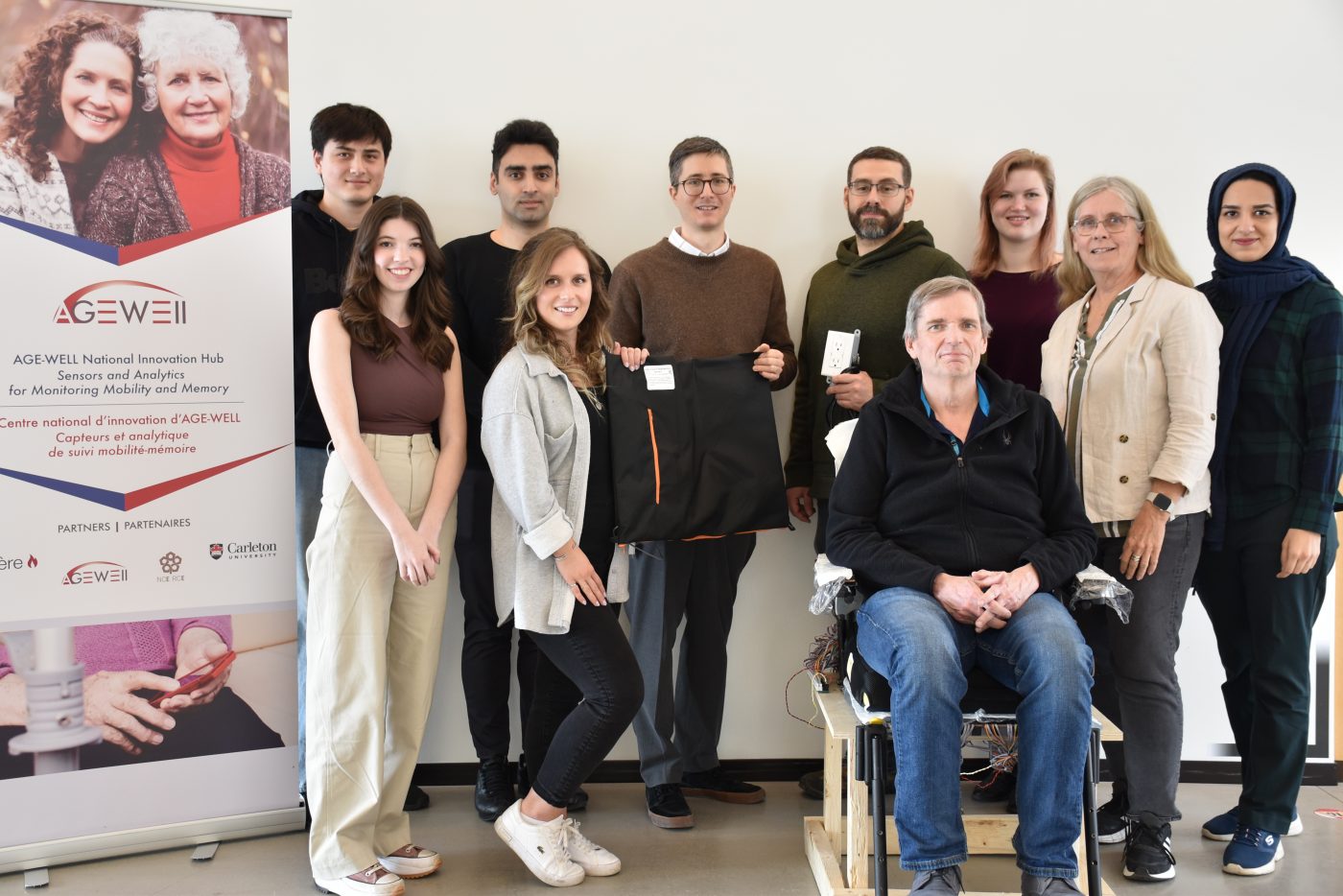Expanding Canadian Investment in Aging in Place Technologies
Carleton University AGE-WELL SAM3 National Innovation Hub Receives Funding to Assist Canadian SMEs in Furthering AgeTech Solutions
Tyrone Burke
For older adults who want to live independently, transportation can be a major challenge. Many rely on public transportation to get them to appointments and shopping centres. But in Canada, public transportation is not always available, especially in rural communities.
RideShark Unified Mobility spotted this transportation gap and sought to address it. The Ottawa-based tech company has expertise in developing multimodal commute management platforms for large organizations, but it was the first time the company developed software specifically for older users.
“Many people want to age in place but face isolation due to inadequate transportation access,” says Sharon Lewinson, the CEO of RideShark. “We sought to address this by developing a new module: On-Demand Community-based Carpooling,”
RideShark was already capable of organizing volunteer drivers, but they knew that their app’s interface would need to be modified for use by older adults.
“It needs to be simple and easy to use,” says Bruce Wallace, an adjunct professor in Carleton’s Department of Systems and Computer Engineering and Affiliated Investigator at Bruyère Research Institute.
“When you put technologies directly into the hands of the older adult, it’s absolutely critical to think about design. Things as simple as button size and layout are quite significant and it’s important to think through how they will be used.”
Researchers at Carleton’s AGE-WELL SAM3 National Innovation Hub worked with RideShark to ensure the new module is fit for purpose. SAM3 stands for sensors and analytics for monitoring mobility and memory, and its researchers work with private sector companies to co-create technologies that enable an aging population to live independently. SAM3 helps small-and-medium-sized enterprises (SMEs) leverage the knowledge of researchers from diverse academic backgrounds, including clinicians, engineers, industrial designers, health and social sciences researchers.

“Industrial designers are part of our team, and they have sub-specialized in how to design for people with some cognitive decline, or those who have a tremor caused by Parkinson’s,” says Wallace. “As an engineer, I’m aware of design, but it’s a really unique skillset to be able to think about design in this way. It’s one of the benefits of having an interdisciplinary research ecosystem.”
RideShark’s expertise centered around commuter transportation, so its new module was unchartered terrain – but SAM3 helped them navigate it.
“Our collaboration with Carleton’s AGE-WELL SAM3 offered a fresh perspective,” says Lewinson. “SAM3 facilitated the testing of the new module’s user interface and user experience with older adults. Not only has it enhanced its usability, it’s also informing improvements to the user interface and user experience of RideShark’s core application, benefiting all potential users.”
The collaboration was made possible through funding from the National Research Council of Canada Industrial Research Assistance Program (NRC IRAP). NRC IRAP funding to Carleton University supported SAM3 in working with Canadian companies with promising age tech products that need testing and validation. In addition to its work with RideShark, NRC IRAP support enabled SAM3 to work with five other Canadian SMEs during its first year:
- XSENSOR based in Calgary is the leader in Intelligent Dynamic Sensing, their Intelligent Insoles provide high resolution plantar pressure and gait measurement data for human performance and clinical applications. XSENSOR engaged with Carleton SAM3 CTO to understand how to adapt the technology for target clinical applications including; sit to stand protocols, elderly gait assessment and monitoring progress of conditions such as stroke recovery.
- Amylior, a Montreal-area company that makes complex power wheelchairs, wanted to integrate sensing technology to understand more about a user’s movements, and whether they need to be repositioned to improve postural stability or load distribution.
- Able Innovations has developed a novel mechatronic patient transfer system that moves between beds, tables and stretchers. The Toronto-based company wanted to document that the magnitude of forces the system exerted on patient during a transfer was safe.
- Esprit-ai developed a new sensor that measures sleep behaviour & pattern and engaged us for an objective evaluation. In aging care settings, people often get out of bed multiple times each night. Kanata-based Esprit-ai’s sensor collects data that can help identify conditions a patient might have, as well as notify staff when patients at risk of all get out of bed.
- Internet-of-things company Swidget was already making smart-home solutions for the consumer market, and the Kingston and Ottawa-based company worked with SAM3 to explore how their tech could be used to help people age in place.
With new NRC IRAP funding support for Carleton University, the selection of the 2024-2025 cohort of SMEs is already underway. In the year ahead, the “SAM3 SME Support for Aging in Place Technology” project expects to collaborate with ten more Canadian companies.

“Many SMEs do not have the time and/or expertise to do this type of development themselves,” says Heidi Sveistrup, an adjunct research professor at Carleton’s Department of Systems and Computer Engineering and Senior Investigator at Bruyère Research Institute.
“SAM3 really fits that niche. In Ottawa, we have created an innovation ecosystem where industry partners can work with aging technology experts and with the community.”
In addition to this support through NRC IRAP, Carleton University is also pleased to be collaborating with the NRC through its Aging in Place Challenge program. This type of work is essential to helping improve the quality of life of older adults and their personal caregivers, and to developing technologies and innovations that support safe and healthy aging.
“People prefer to be able to remain independent, continuing to live in their own residences or where they choose” says Wallace. “We do not have the bricks and mortar buildings to continue the current model. It is also not what people want. If people can and want to live at home longer, we want to help them do exactly this.”